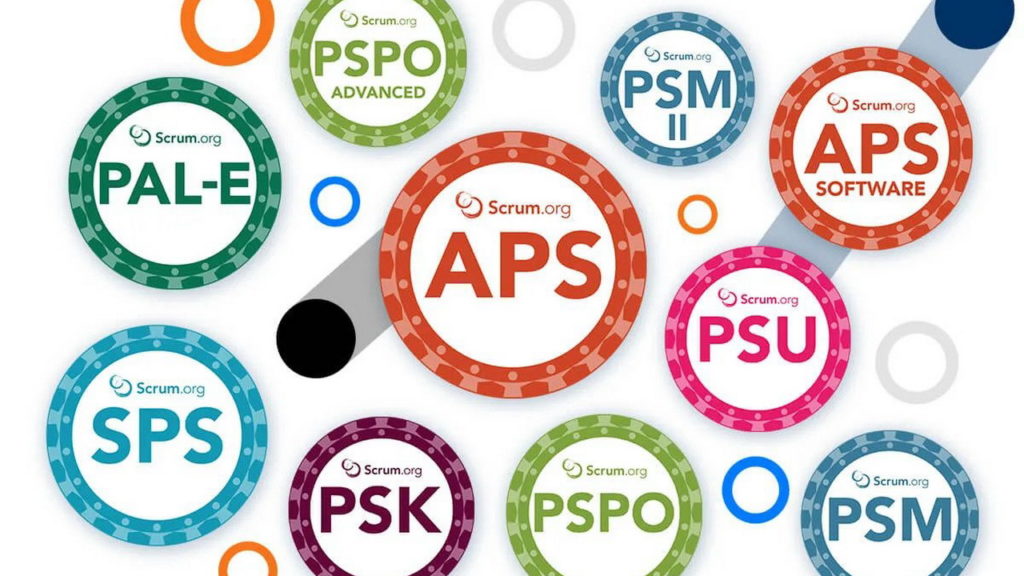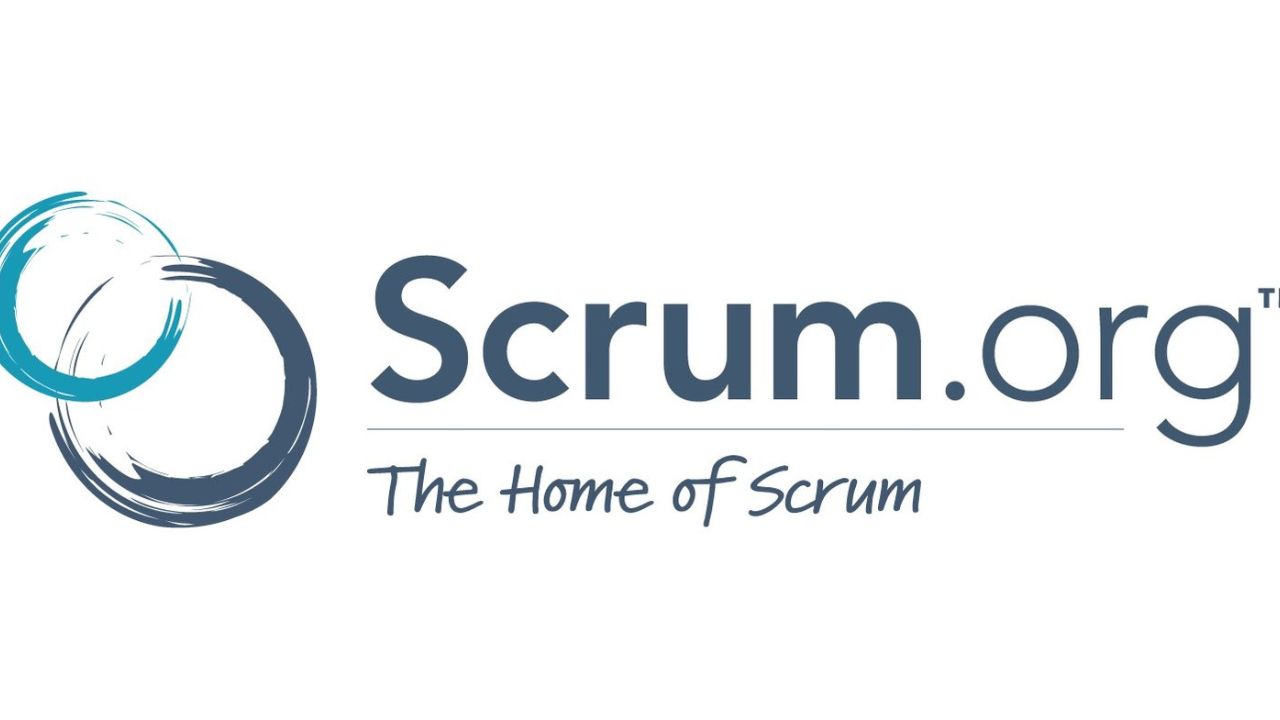Scrum.org Pros and Cons: Unveiling the Real Truth
Introduction
Welcome, Scrum enthusiasts! In today’s blog post, we will take a deep dive into the world of Scrum.org, the Home of Scrum. Scrum.org, founded in 2009 by Ken Schwaber, one of the co-creators of the Scrum framework, is a mission-based organization dedicated to helping individuals and teams solve complex problems through the application of Professional Scrum.
If you’re just starting with Scrum, you may be familiar with the challenges of choosing a certification body and deciding which courses to take. That’s where Scrum.org, one of the most popular go-to sources for Scrum professionals, comes in.
In this article, we will unveil the most important facts about Scrum.org and provide an objective analysis of its pros and cons. By the end of this post, you will have a comprehensive understanding of Scrum.org, enabling you to make informed decisions on your Scrum journey.
Before we dive into the pros and cons of Scrum.org, let’s explore its creation, and functioning, and even touch upon the financial aspects. This knowledge will give you valuable insights into the inner workings of Scrum.org.
So, let’s get started and uncover the truth about Scrum.org!

Creation of Scrum.org
Scrum.org was founded by Ken Schwaber, one of the co-creators of Scrum. Ken Schwaber is a renowned figure in the Agile community and has played a significant role in shaping the Scrum framework. His deep understanding of complex problem-solving and dedication to improving the practice of Scrum led to the establishment of Scrum.org.
Scrum.org operates as a mission-based organization, meaning its primary focus is to fulfill its mission rather than generating profit. The organization’s mission is to enable individuals and teams to solve complex problems by providing them with the necessary tools, training, and resources based on the principles of Scrum.
Scrum.org offers a comprehensive range of training courses and certifications to facilitate the learning and application of Scrum. These programs aim to equip individuals and teams with the knowledge and skills needed to effectively implement Scrum in their respective contexts. The training courses cover various aspects of Scrum, including roles, events, artifacts, and best practices.
Scrum.org operates on a common competency model, which ensures consistency and standardization in the understanding and application of Scrum principles. By following a common competency model, Scrum.org fosters a shared language and a cohesive approach to Scrum, promoting collaboration and effective communication among practitioners.

Financial Aspects and Revenue Streams of Scrum.org
Scrum.org generates revenue through several sources. The primary revenue streams include fees for training courses and certifications. Individuals and organizations interested in acquiring Scrum knowledge and certifications can enroll in these programs for a fee, which contributes to the financial sustainability of Scrum.org.
Scrum.org also engages in partnerships with organizations and licensed trainers to expand its reach and provide Scrum training globally. Licensed trainers, who meet the organization’s standards, deliver training courses on behalf of Scrum.org, thus contributing to the financial stability of the organization.
As a mission-based organization, Scrum.org emphasizes continuous improvement. This includes revising and updating training materials, certifications, and assessment tools to align with the evolving needs and practices in the Agile community. Revenue generated from these initiatives is reinvested into the organization to further enhance its offerings and support ongoing learning opportunities.

Exploring the Pros of Scrum.org
- Extensive Training and Certification Programs: Scrum.org offers a wide range of training courses and certifications that enable individuals and teams to enhance their Scrum knowledge and skills. This structured approach helps in building a strong foundation and promotes a common understanding of Scrum across organizations.
Here are some additional facts about the pros of Scrum.org’s training and certification programs:- Diverse Training Options: Scrum.org provides a diverse array of training options to cater to different learning preferences and levels of expertise. From foundational courses for beginners to advanced courses for experienced practitioners, individuals can choose the training that best suits their needs and goals. This flexibility ensures that Scrum.org’s training programs are accessible and beneficial to a wide range of learners.
- Rigorous and Quality Training: Scrum.org’s training courses are known for their rigor and high quality. The organization maintains strict standards for trainers and training materials to ensure consistency and excellence across all its offerings. This commitment to quality ensures that participants receive valuable and reliable instruction that aligns with the principles and practices of Scrum
- Practical Application Focus: Scrum.org’s training programs emphasize the practical application of Scrum principles and techniques. Participants not only gain theoretical knowledge but also learn how to effectively apply Scrum in real-world scenarios. This focus on practicality equips individuals and teams with the necessary skills and confidence to implement Scrum successfully and drive tangible results.
- Global Recognition: Scrum.org certifications are widely recognized and respected within the Agile community and the industry as a whole. Achieving a Scrum.org certification signifies a level of expertise and competence in Scrum practices, which can enhance career prospects and credibility. The global recognition of Scrum.org certifications further reinforces their value and validity. In addition to the global recognition and respect that Scrum.org certifications carry, the fact that they don’t require renewal makes them even more appealing. You can proudly showcase your expertise in Scrum practices, knowing that your certification remains valid over time. This feature adds to the value and convenience of Scrum.org certifications, making them an excellent choice for professionals looking to solidify their Scrum credentials and advance their careers in the Agile industry.
Examining more Advantages of Scrum.org
- Continuous Learning Path: Scrum.org’s training programs are designed to provide a continuous learning path for individuals. The certifications are structured in a way that encourages professionals to progress from foundational to more advanced levels. This progressive learning approach allows individuals to continually develop their Scrum skills and knowledge, unlocking new opportunities for growth and mastery.
- Community Engagement: Scrum.org fosters a vibrant and supportive community of Scrum practitioners. Through its training programs, individuals have the opportunity to connect with like-minded professionals, share experiences, and learn from each other’s insights. This sense of community enhances the overall learning experience and provides a platform for ongoing collaboration and knowledge exchange.
By offering extensive training and certification programs, Scrum.org empowers individuals and teams to acquire the necessary knowledge, skills, and credentials to excel in the application of Scrum.
The organization’s commitment to quality, practicality, global recognition, continuous learning, and community engagement ensures that its training programs deliver value and contribute to the professional growth of practitioners.
Unveiling the Cons of Scrum.org
- Steeper Learning Curve: Scrum, in general, can be challenging to grasp for individuals who are new to agile methodologies. Scrum.org’s emphasis on a common competency model and rigorous training programs may increase the learning curve, making it more difficult for some individuals to adopt and implement Scrum effectively.
Here are some additional important arguments regarding the steeper learning curve associated with Scrum.org:- The Complexity of Agile Concepts: Agile methodologies, including Scrum, introduce a paradigm shift in project management and require individuals to adopt a different mindset and approach. The concepts and principles of Agile, such as self-organization, iterative development, and adaptive planning, can be challenging for individuals who are new to these methodologies. Scrum.org’s emphasis on a common competency model and rigorous training programs ensures a deep understanding of these complex Agile concepts, which may increase the learning curve for some individuals.
- Paradigm Shift from Traditional Methods: Many organizations and professionals are accustomed to traditional, plan-driven project management approaches. Transitioning to Scrum, with its self-organizing teams, iterative cycles, and emphasis on customer collaboration, requires a significant shift in mindset and practices. Scrum.org’s training programs, which focus on in-depth learning and practical application, may initially be overwhelming for individuals who are accustomed to traditional methods, thus contributing to a steeper learning curve.
- Cultural Change and Resistance: Implementing Scrum often involves cultural change within organizations. It requires teams to embrace transparency, collaboration, and continuous improvement. This cultural shift can face resistance from individuals who are resistant to change or who are more comfortable with hierarchical and command-and-control structures. Scrum.org’s emphasis on a common competency model and rigorous training may require individuals to unlearn old habits and adapt to new ways of working, which can prolong the learning curve.
Uncovering Additional Drawbacks of Scrum.org
- Need for Skillful Facilitation: Scrum places a significant emphasis on collaboration, effective communication, and facilitation within teams. Individuals serving as Scrum Masters or Agile facilitators require a specific skill set to navigate team dynamics, facilitate productive meetings, and resolve conflicts. Scrum.org’s training programs aim to develop these facilitation skills, but mastering them can be challenging and time-consuming, especially for individuals who are new to these roles, further contributing to the steeper learning curve.
- Organizational Complexity: Implementing Scrum effectively often involves navigating complex organizational structures, stakeholder relationships, and existing processes. Scrum.org’s training programs equip individuals with the knowledge and skills to address these complexities, but the learning curve can be steep as individuals need to understand how to adapt Scrum to their specific organizational context, align it with existing practices, and gain support from stakeholders.
Having addressed the challenge of the steeper learning curve linked to Scrum.org, let us now delve into another crucial aspect that demands your attention when it comes to Scrum.org…
Strict Adherence to Framework
Scrum.org follows a strict interpretation of the Scrum framework, which may limit flexibility in certain situations. Organizations that require more adaptability and customization might find the rigid adherence to Scrum principles restricting and difficult to align with their specific needs.
Scrum.org emphasizes a strict interpretation and adherence to the Scrum framework. While this approach provides clarity and consistency, it may limit flexibility in certain situations. Organizations operating in complex or unique environments may find it challenging to adapt Scrum.org’s rigid principles to their specific needs. The framework’s predefined roles, events, and artifacts may not align perfectly with every organization’s context, which can restrict customization and hinder the ability to address specific requirements or constraints effectively.
Scrum.org’s focus on adhering strictly to the Scrum framework leaves limited room for tailoring or customization. This can be problematic for organizations that require adaptability to accommodate their unique circumstances, such as regulatory requirements or specific industry practices. Without the ability to tailor the framework to their specific needs, organizations may feel constrained by Scrum.org’s standardized approach and struggle to achieve optimal results.
Balancing Scrum’s Strengths with Compatibility Challenges
While Scrum is well-suited for complex and dynamic projects, its strict adherence may not always align with other project management methodologies or hybrid approaches. Organizations that operate in environments where blending Scrum with other practices is necessary might face challenges when trying to incorporate additional frameworks or methods alongside Scrum. The strict adherence to the Scrum framework may create friction when attempting to integrate diverse project management practices.
Scrum.org’s primary focus is on the core Scrum framework and its application within individual teams. While it offers guidance on scaling Scrum through frameworks like Nexus, it may not provide as extensive support for large-scale or enterprise-level implementations as other frameworks or methodologies do. Organizations seeking comprehensive scaling frameworks or specialized guidance may find Scrum.org’s offerings insufficient for their needs.
The strict adherence to the Scrum framework promoted by Scrum.org can sometimes encounter resistance within organizations. Team members who are used to more flexible or traditional approaches may struggle to adapt to the prescribed roles, events, and artifacts of Scrum.
This resistance to change can hinder the successful adoption and implementation of Scrum.org’s practices, requiring additional effort to overcome organizational resistance and ensure widespread acceptance.

Certification Dependency
While Scrum.org’s certifications are highly regarded in the industry, some critics argue that the focus on certifications can lead to a “check-the-box” mentality. This means that individuals may prioritize obtaining certifications rather than truly understanding and applying Scrum principles in practice.
Here are some additional important details regarding the certification dependency associated with Scrum.org:
- Surface-Level Knowledge: Critics of certification-focused approaches argue that individuals may pursue certifications primarily to enhance their resume or meet organizational requirements. In some cases, this can result in a superficial understanding of Scrum, where individuals focus on memorizing information rather than deeply grasping the underlying principles and values of the framework. This “check-the-box” mentality can limit the true application and effectiveness of Scrum in practice.
- Lack of Practical Experience: While Scrum.org’s certifications validate knowledge and understanding of Scrum, they do not necessarily guarantee practical experience in implementing Scrum in real-world scenarios. Some individuals may pass certification exams without having hands-on experience in applying Scrum principles or working as part of Scrum teams. This disparity between certification and practical experience can lead to challenges when individuals need to apply Scrum in complex or unique situations.
Overemphasis on Certification
In environments where Scrum.org’s certifications are highly valued or mandated, there can be a tendency to prioritize certification attainment over actual skill development and continuous learning. Individuals may feel pressured to pursue certifications quickly or as a one-time achievement rather than embracing a mindset of continuous improvement.
This overemphasis on certification can detract from the ongoing learning and professional growth necessary to truly excel in applying Scrum.
Ignoring the Agile Mindset
Scrum is not solely about following a set of prescribed roles, events, and artifacts. It is also about embracing an Agile mindset, which emphasizes collaboration, adaptability, and a focus on delivering customer value.
Critics argue that a certification-centric approach may place too much emphasis on the mechanics of Scrum, potentially neglecting the development of the Agile mindset necessary for long-term success. This can lead to a disconnect between certification holders and the true spirit of Agile principles.
Learning beyond Certifications
Scrum.org’s certification programs provide a solid foundation, but they should not be seen as the sole source of knowledge and skill development. The Agile landscape is continuously evolving, and practitioners must engage in continuous learning beyond certifications. This includes participating in communities of practice, attending conferences, reading industry literature, and actively seeking opportunities to expand their understanding and application of Scrum.
Critics argue that overreliance on certifications may hinder individuals from pursuing these additional learning avenues.
It is important to strike a balance between obtaining certifications and gaining practical experience while nurturing an Agile mindset. The value of certifications lies in their ability to validate and supplement practical skills and experience, rather than serving as a standalone measure of proficiency. Organizations and individuals should emphasize ongoing learning, practical application, and the development of the Agile mindset alongside certification attainment to ensure the effective and meaningful implementation of Scrum principles.
Achieving Harmony: Certifications, Experience, and Agile Mindset
To further enhance your practical experience and gain hands-on knowledge in applying Scrum, I invite you to join my Agile and Scrum Masterclass.
This Masterclass is designed to provide participants with a comprehensive understanding of Scrum principles and practices, while also focusing on practical application in real-world scenarios.
During the Masterclass, you will have the opportunity to work on interactive exercises, simulations, and case studies that simulate actual Agile projects. You will gain valuable experience in collaborating with cross-functional teams, managing product backlogs, conducting effective Scrum events, and handling various challenges that may arise during the implementation of Scrum.
In addition to the practical exercises, the Masterclass will also delve into the Agile mindset, emphasizing the importance of iterative improvement, continuous learning, and fostering a culture of collaboration and adaptability within organizations.
By participating in this Agile and Scrum Masterclass, you will not only supplement your certification with practical skills but also develop a deeper understanding of how to successfully apply Scrum in your specific context. You will leave the Masterclass equipped with the tools, techniques, and confidence to navigate the complexities of Agile projects and drive meaningful outcomes.
Don’t miss this opportunity to gain hands-on experience and take your Scrum knowledge to the next level. Join me in the Agile and Scrum Masterclass and embark on a transformative journey towards becoming an effective Agile practitioner.
To register for the Agile and Scrum Masterclass and secure your spot, please visit www.whatisscrum.org. I look forward to welcoming you and sharing this valuable learning experience together!
Limited Tailoring for Non-Software Development
Another potential drawback of Scrum.org is that the body was initially developed for software development projects. While Scrum has been successfully applied in various domains, professionals from non-software industries may find it challenging to adapt Scrum.org’s approach to their specific contexts.
This limitation may discourage adoption in certain sectors. However, I understand the importance of tailoring Agile practices to suit the unique requirements of different industries.
To address this concern, my Agile and Scrum Masterclass is designed to bridge the gap between Scrum.org’s approach and the specific needs of professionals from non-software industries.
During the Masterclass, we will explore case studies and examples from diverse industries, including manufacturing, marketing, finance, healthcare, and more.
By analyzing these real-world scenarios, we will identify strategies for adapting Scrum principles and practices to your specific domain.
Through interactive discussions and collaborative exercises, you will learn how to tailor Scrum to suit the nuances of your industry, while still preserving the core Agile principles. We will delve into the challenges and opportunities unique to your sector, and explore how Scrum can be customized to address those specific needs.
The Agile and Scrum Masterclass aims to empower professionals from non-software industries by providing them with practical tools and techniques for successfully implementing Scrum in their respective domains. By attending this Masterclass, you will gain the confidence and knowledge needed to adapt Scrum.org’s approach to your specific context.
Don’t let the limitations deter you from exploring the benefits of Scrum in your industry.
Join me in the Agile and Scrum Masterclass to bridge the gap between Scrum.org and your unique context.
Together, we will unlock the potential of Scrum to drive success in your domain.
To secure your spot in the Agile and Scrum Masterclass and learn how to tailor Scrum for your industry, please visit this address.
I look forward to welcoming you and embarking on this transformative learning journey together!”
Conclusion
“Scrum.org, the Home of Scrum, offers a range of benefits for individuals and teams seeking to enhance their Scrum expertise.
The comprehensive training programs, common competency model, and support for complex problem-solving are significant advantages.
However, the steeper learning curve, strict adherence to the framework, certification dependency, and limited tailoring for non-software development are cons that some people may encounter. It’s essential to weigh these pros and cons carefully to determine if Scrum.org aligns with your organization’s needs and goals.
Remember, Scrum is a framework that can be adapted and tailored to suit different contexts, and it’s important to find the right balance for your team.
I hope you found this analysis helpful and gained a deeper understanding of what Scrum.org has to offer.
As always, please like, share, and subscribe to our channel for more insightful content.

